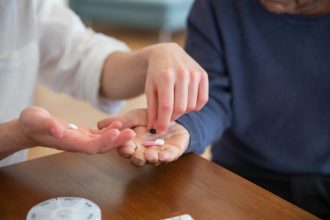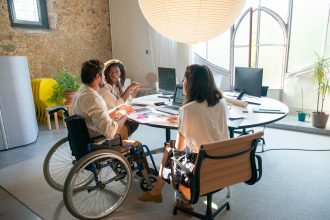Treating a brain injury is more than just responding to an emergency. It is a process that begins the moment a patient is stabilized and often continues for months, years, or even a lifetime. While emergency care saves lives, rehabilitation restores function, independence, and dignity.
- Treatment in the Acute Phase
- Transition to Rehabilitation
- The Rehabilitation Team
- Rehabilitation Therapies
- Physical Therapy
- Occupational Therapy
- Speech & Language Therapy
- Cognitive Rehabilitation
- Neuropsychology & Mental Health
- Medications in Brain Injury Care
- Assistive Technology and Devices
- Complementary and Alternative Therapies
- Role of Families and Caregivers
- Long-Term Management
- Research and Innovations
- Conclusion
Because no two brain injuries are alike, treatment must be personalized. It often involves a combination of medical care, therapies, medications, assistive technology, and strong support from families and caregivers. This guide provides a comprehensive overview of how brain injuries are treated, what rehabilitation looks like, and how recovery is supported over time.
Treatment in the Acute Phase
The acute phase begins immediately after injury, often in the emergency department or intensive care unit. The priorities are:
- Stabilizing vital signs – ensuring the patient can breathe and that the heart and circulation are functioning.
- Preventing secondary brain damage – controlling swelling (edema), reducing pressure inside the skull, and making sure the brain gets enough oxygen.
- Imaging and monitoring – CT scans or MRIs help detect bleeding, fractures, or blood clots.
- Surgery if needed – neurosurgeons may remove blood clots (hematomas), repair fractures, or relieve dangerous intracranial pressure.
- Critical care – patients may be placed in medically induced comas, connected to ventilators, or given medications to reduce seizures or swelling.
This stage is about survival and preventing further injury. Once the patient is stable, the focus shifts toward recovery and rehabilitation.
Transition to Rehabilitation
As soon as a patient is medically stable, rehabilitation should begin — sometimes even in the hospital bed. Research shows that early rehabilitation improves long-term outcomes by helping patients relearn skills, maintain strength, and prevent complications such as muscle stiffness or bedsores.
The transition can be challenging. Patients may still face confusion, limited mobility, or emotional instability. Families often begin to realize that recovery will be a long-term process, not just a matter of days.
The Rehabilitation Team
Rehabilitation is most effective when guided by a multidisciplinary team working together. Depending on the patient’s needs, this team may include:
- Physiatrists: Doctors specializing in rehabilitation medicine.
- Neurologists and neurosurgeons: Oversee medical aspects of brain function and complications.
- Physical therapists: Help restore movement, balance, coordination, and strength.
- Occupational therapists: Focus on practical skills such as dressing, cooking, and returning to work.
- Speech-language pathologists: Treat speech, communication, and swallowing problems.
- Neuropsychologists: Assess memory, reasoning, attention, and behavior changes.
- Rehabilitation nurses: Provide ongoing care, manage medications, and monitor daily progress.
- Social workers and case managers: Connect families to community services, benefits, and support networks.
The team meets regularly to adjust goals as progress is made.
Rehabilitation Therapies
Physical Therapy
Restores movement, balance, and physical independence. Patients may practice walking, climbing stairs, or using wheelchairs safely.
Occupational Therapy
Focuses on regaining independence in daily tasks: eating, dressing, bathing, driving, or managing household routines.
Speech & Language Therapy
Helps patients regain speech, improve comprehension, and address swallowing problems (dysphagia).
Cognitive Rehabilitation
Trains the brain in memory, attention, problem-solving, and planning. Strategies may include structured exercises, computerized training, and real-world practice.
Neuropsychology & Mental Health
Supports emotional well-being. Brain injuries often cause depression, anxiety, or personality changes that benefit from counseling, therapy, and sometimes medication.
Medications in Brain Injury Care
While there is no single “cure,” medications support recovery by managing complications:
- Anticonvulsants – prevent seizures, especially soon after injury.
- Diuretics & hyperosmolar therapy – reduce brain swelling in the ICU.
- Pain medications – manage headaches and discomfort.
- Antidepressants & antianxiety drugs – address emotional and behavioral changes.
- Stimulants – sometimes used to improve attention, energy, or wakefulness in patients with prolonged fatigue.
For more, see Medications in Brain Injury Treatment.
Assistive Technology and Devices
Modern technology plays a key role in recovery:
- Mobility aids – canes, walkers, wheelchairs, and robotic exoskeletons.
- Communication devices – tablets and speech-generating devices for non-verbal patients.
- Cognitive aids – smartphone reminders, apps, or smart home technology.
- Adaptive equipment – tools for cooking, writing, or driving.
See Assistive Technology for Brain Injury.
Complementary and Alternative Therapies
Some patients explore complementary therapies alongside standard rehabilitation, such as:
- Acupuncture for pain and relaxation.
- Music and art therapy for cognitive and emotional expression.
- Yoga, tai chi, and mindfulness for balance and stress relief.
- Nutritional support for brain healing.
These should always be guided by medical advice. See Complementary Therapies for Brain Injury.
Role of Families and Caregivers
Caregivers are central to recovery. They help patients practice exercises at home, track medications, and provide emotional support. However, caregiving can also be exhausting and overwhelming. Support groups, respite care, and counseling are vital to prevent burnout.
See Family and Caregiver Support.
Long-Term Management
For many survivors, recovery does not end when therapy sessions stop. Ongoing care may include:
- Regular medical check-ups and neurological assessments
- Continued outpatient therapy
- Vocational rehabilitation for return to work or school
- Community programs for social reintegration
- Mental health care for survivors and families
Some patients adapt fully, while others live with permanent disabilities that require long-term assistance.
Research and Innovations
New research is transforming rehabilitation:
- Virtual reality (VR) therapy for cognitive and motor training
- Brain-computer interfaces (BCIs) for communication and movement in severe cases
- Stem cell research exploring ways to regenerate brain tissue
- Personalized rehabilitation programs using AI and advanced imaging
These advances hold promise for improving outcomes in the years ahead.
Conclusion
Brain injury treatment and rehabilitation are not single events, but journeys. From emergency care to long-term adaptation, patients rely on medical teams, therapies, technology, and caregivers to guide them forward.
Recovery may not mean returning to life exactly as it was before, but it can mean building a meaningful, independent future. With comprehensive treatment and rehabilitation, many survivors achieve progress once thought impossible.






